Oh, you picked up the skills so fast, despite your age!
Wow! You have straight hair. So, not all people from your region/community have wiry hair, right?
Well, we expected the most qualified person to get the job, but…
You speak with a Western accent. I am sure you spent a bigger part of those growing-up years in the West.
Don’t talk like that …you sound so bi!
Why should you bother about the hours? You don’t have children to take care of!
Simple statements, honest observations, genuine compliments visibly.
Not quite. These may be anything but “simple”, “honest” and “genuine”.
What is it then?
This is microaggression, a seemingly normal situation, but where the underlying sentiment is one of hostility or offensiveness. Micro-aggressive behavior includes making insensitive remarks, assumptions or questions about several aspects of an individual’s identity. It could be race, gender, sexuality, region, caste, religion, beliefs, and many more.
The stereotyping is based on a rather distorted understanding that because a person has so and so identity, the individual will exhibit certain traits typical of that group. It is usually targeted at marginalized, under-represented groups or communities, but could affect anyone. In fact, many of us may have faced similar discrimination in our careers.
Microaggression can take different forms. A study by Teachers College (Columbia University), cited in an article in Great Place To Work, divides these actions into three subgroups:
- Microinsults, such as verbal (making a disrespectful statement), behavioral (reflected through an action such as assuming an older colleague may be inept in understanding technology and hence ruling the person out), and environmental (for example, excluding people of color from executive roles).
- Microassaults include actions committed intentionally, such as displaying supremacist symbols.
- Microinvalidations are subtle communications to negate the reality of a person (such as asking an Asian where they are born, implying they are permanently foreigners).
Microaggressions stem from a certain mindset that hinges on a feeling of entitlement simply because one may be in a perceptibly “advantageous” position. Therefore, the range of situations where these trespasses against identity can happen is vast. From exchanging pleasantries, to watercooler conversations between peers and friends, to the interaction between a reporting manager and their reportee, to being considered for projects, roles and positions.
Impact of microaggression
On individuals
Research shows that microaggression has a debilitating impact on health. And why wouldn’t it? After all, any such behavior has a direct bearing on the psychological safety of an individual.
According to data collated by Morning Sign Out at UCI, a University of California chapter, microaggression adversely affects mental, emotional, and physical health.It triggers anger, confusion, anxiety, digestive disorders, and a negative coping mechanism, including substance abuse.
Facing microaggression over a time creates a state of constant conflict that raises the risk of traumatic stress conditions. A study in 2019 hinted at a possible association between African American women in the US, who had faced microaggression but did not share their experiences to others, with having shorter telomeres (the ends of chromosomes that protect the DNA).
On organizations
At the organizational level, if leaders cannot diffuse the toxic culture, they risk losing talent. Any voluntary churn will only affect productivity and the bottom line. Today, when competition is intense, it will cost organizations dearly to not have a thriving work culture built on diversity.
Challenge in spotting microaggression—Walking on eggshells
Identifying microaggression is difficult. This is because it is a very subtle behavioral trait. Also, sometimes it is not intentional. Something you may not mean can be perceived wrongly. You may have intended a compliment, but it misfired.
That said, it cannot be brushed under the carpet of a reckless remark, or people taking refuge in the hypersensitivity of others. It is not uncommon to hear that marginalized groups are often too sensitive about how they are treated (well, thinking along these lines itself borders on microaggression).
The need is to build a culture of awareness. A workplace where people are sensitive about others, especially the under-represented communities.
What should a leader do to build a culture against microaggression?
Educate and create awareness: You need to make concerted efforts to build consciousness at the workplace.
The first step is to spread awareness and educate people on being sensitive to others. Sensitizing people about the impact of their actions, irrespective of the intent, is important.
Have as many conversations as you can. Talk candidly about topics that are difficult, such as sexism, racism, or homophobia. These subjects are important because this is where mistakes happen. Talking will not just spread awareness but also give confidence in the people to speak up against inequality.
In coordination with your HR leadership, build a structured policy framework and training program as part of your diversity, equity, inclusion and belonging(DEIB) efforts. Ad hoc measures rarely have the impact. Formalization gives the direction.
The policies could include a lexicon where vocabulary with derogatory connotations is detailed, such as Blacklist (for negative things vis-à-vis whitelist for positive things), or asking a woman to “man up” (gender bias). This will deter the use of culturally sensitive words and phrases.
As always, this should not be a one-time exercise. The programs around unconscious bias or microaggressions should be conducted regularly. These should be made mandatory for people across the organization, from the management team to the line managers to the junior-most employees. It is very important to work on the mindset at every level to build an inclusive workplace.
A lot of issues spring up along the reporting manager-reportee equation. Providing the right training tools and resources to the line managers to educate them on the necessity of treating everyone with equality and respect will go a long way in having the desired impact.
You may organize webinars or training sessions on unconscious bias/microaggression to help people understand how it seeps in. It will also tell them how to deal with such situations when they are the victim, or how to report when it is happening to another person.
Empower people: Often people don’t speak up against microaggression.
The reason is in the numbers and the resultant attitude.
When people from under-represented or minority communities face unfriendly remarks or are judged on their personality types, they hold back from speaking up. Being fewer in strength, the underlying assumption is they will not be heard at all or, even if they are heard, nothing will be done about it.
This only emboldens the ‘offenders’. They feel encouraged to carry on with their behavior.
As a leader, you must ensure every employee in your organization feels free to stand up for themself without the fear of repercussions.
This could be for any situation, from noticing an unfriendly remark to being considered for promotion or projects. They must have the freedom to discuss with their reporting managers and not feel left out simply because they are a part of a marginalized group.
Conversations are a great tool: Urge people to be mindful and emphasize on the need to create a psychologically safe environment. When people see you are very careful with your words and you choose language prudently, they will not just emulate your behavior, it will also empower others to point out whenever there is a lapse by someone.
Use every occasion to communicate with people, such as through emails or in your address to the organization, to come out loud and clear on democratizing the workplace.
Be vigilant: If you spot an unpleasant or problematic situation, address it at your earliest. Suppose you are part of a meeting where one member passes a derogatory remark at another. How will you tackle the situation? Will you haul up the person immediately? Or will you prefer to take the individual aside and ask for an explanation for the behavior?
Sometimes, you could step in with a simple query as “What was the joke? I did not get it”, or “And how do you think saying that will help”? Kerry Ann Rockquemore, author and speaker in faculty development and leadership, calls this “micro resistance”. Cited inCultureAmp, an employee experience platform, she says leaders could engage in such a behavior. This will be tantamount to taking meaningful action.
At other times, you could consider facilitating an authentic dialogue between two people.
You many need to factor in the seniority of the people involved before responding. The aim is to convey thoughtfully such that it has the desired impact.
Sending out the right message will help you connect better. When you educate co-workers about microaggression, you are also sharing in the burden of the under-represented or marginalized communities.
Build confidence: You could offer flexi working hours or a hybrid work culture. In the US, for example, the African-American people are frequently under-represented among knowledge workers. According to data provided by Future Forum, a consortium engaged in fostering an inclusive work environment at organizations, microaggression at workplace is one of the key reasons African-American knowledge workers reject the office-centric model. Just 3% of this segment is keen on returning to full-time co-located office vis-à-vis 21% of white knowledge workers. Flexible work has lowered the instances of microaggressions and enabled this group to bounce back faster.
Set up an effective redress mechanism, such as dedicated committees, policies and regulations, to address problematic situations. If the person sees leadership taking genuine efforts to address disrespectful behavior, it will help the individual open up and speak for themselves.
When you start something, ensure you see it to the end. Follow-ups are crucial to ensure lasting results. Check with your employees for feedback, or if you cannot do that directly, build a system in which following up post-redress is as important. Based on this, you can draw further actionable insights.
Confidence building is more a result of having the right approach and systems in place, and ensuring corrective measures are taken in time.
Reflect on self and set the right example: It is imperative that the leadership keeps a strict watch on its conduct. The strange thing about microaggression is that it can creep into our behavior without us realizing. Hence, the need for vigilance.
It is as important to educate oneself as much as it is to educate others. Microaggression covers a broad spectrum of topics. It is not possible to know each.
Take the steps to enrich your understanding first. Seek help to increase your knowledge about certain communities or culturally sensitive practices. Talk to your colleagues, grow your understanding with the help of books or TV shows or any medium.
And then share that knowledge with the people in your organization. This will help in educating them, too. It will show your commitment to addressing the issue.
How must you deal with a situation where you have committed a microaggression?
Let’s say you’ve committed one—as happens with almost all of us—and you are approached by the aggrieved individual. The way you respond will not just have a profound impact on your character, but also help you set the right example. Here is what you can do:
- Control the temptation to react. Listen to what the person has to say. You may be tempted to react, since the action was not committed intentionally. However, reacting will only make matters worse. Hear out – patiently and empathetically.
- Empathy or compassion has an effective appeal. By just lending your ears, you are letting the person vent their emotions, or complain, which itself is the first step to assuage hurt feeling.
- Choose your words carefully. If you say you did not mean it, it will imply you (as a leader) are not mindful of what you say. If you tender an apology, it will have the opposite effect. It will make you seem guilty, which is wrong if you actually did not mean it.
- Acknowledge that your behavior or action may have caused them pain, and that they are justified in bringing it up to you.
- Appreciate their openness in raising the issue. Let them know that how this will help you in keeping a check over your conduct further in the organization.
- Make amends. If you need to do it in front of a group, try to do that. Don’t apologize in person after hurting (although unintentionally) in public. This will not just win you the trust of the concerned individual, it will also communicate to the other observers how they should behave.
To conclude
Microaggressions are tricky. They are difficult to establish, given the intent factor. They may appear inconsequential to some, but could impact others significantly. Hesitation of victims to notify complicates things further. The underlying fear is about blowing things out of proportion and being judged hypersensitive. A third aspect is that microaggressions include a gamut of actions, from gestures to remarks to active discrimination.
Addressing microaggression is, therefore, not easy. This is why victims find a dichotomy between an organization’s professed allegiance to diversity and inclusion, and its culture.
Given the complexity involved, building a workplace culture is not a one- or two-day endeavor. The leadership needs to be constantly vigilant about educating and building consciousness.
Checking a toxic culture from developing is more important now than ever. Passive-aggressive behaviors and derogatory interactions need to be confronted at the earliest to set the course right. The leadership needs to take decisive steps to ensure that the workplace functions as a tool for economic and social equality, not inequality.


